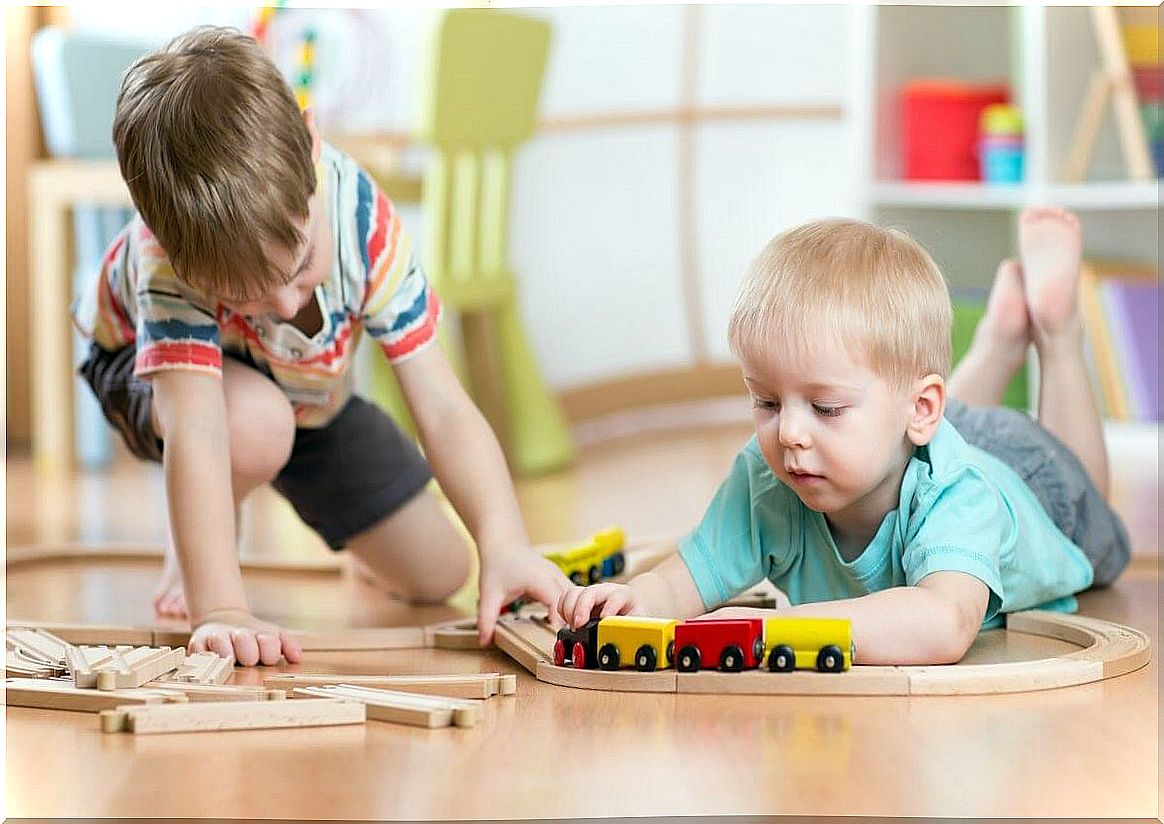The Sensopathic Game What Is It About?

Have you ever heard of sensopathic play? Well, as Albert Einstein once said: Learning is an experience. Everything else is just information .
Do you already have a clue? We help you: Sensopathic play is an experience-based form of learning that allows children to experiment through all five senses.
What is sensopathic play?
Sensopathic play is a fun and engaging way to play and learn with endless benefits for child development. It is about giving children an opportunity to experience the world through their senses.
We are not against technological devices, but to entirely delegate the responsibility of educating our children with them. Any device can provide entertainment but will never be fully capable of allowing you to fully experience the world. It must be clear that the devices also have their limitations.
As we mentioned, this playful method has infinite benefits for child development, especially through touch. Below we reveal more about it.
The importance of touch
Sensopathic play uses the sense of touch to help children better understand the world around them. This method uses the sense of touch – the major sensory system of the body – and through it helps children to experience, understand and enjoy the activity they are doing.
Namely; Through touch, the game seeks to make children better understand what they have in their hands. In this way, children will learn while playing, through touch. Sensopathic play is a very real, concrete, and definitely experiential way of learning through experience.

Sensopathic toys
There are many toys on the market that encourage sensopathic play. There is nothing extraordinary about them and they are usually very accessible. A good example of them would be the following:
- The paintings. (For them to paint with their fingers)
- Construction masses or flex-masses. (Like the popular MoonSand and Play-Doh ) -> 100% tactile development for our children.
- Teddies. (The classic companions of children from an early age)
- Dolls.
- Puppets
- Rubber balls.
- Puzzle.
- Building blocks. (Yes, we mean the beloved Legos)
- Nestable with different textures. (Generally the most popular are those with geometric shapes for babies)
- Toys that include a variety of textures and sounds. It all adds up in the end!
Every child needs an opportunity to experience the world in a very real sense and with the sense of touch. By not giving sensopathic play the prominence it deserves, your child may not learn as effectively as when they are fully physically involved in their own learning by creating meaningful experiences.
The King of All Life: The Sensopathic Game
Undoubtedly, the traditional is often the best. Of course, technology allows us to improve and develop more and better alternatives but we cannot completely forget what we left behind. The key is to be smart and choose to evaluate well what are the best resources to stimulate children’s senses.
Screens don’t provide real learning. A four-year-old child can play on a tablet but if he cannot do it in the real world, he will have motor difficulties, spatio-temporal structuring, coordination, attention, memory, among others.
Similarly, a five-year-old can build a 64-piece puzzle on a computer or tablet and later struggle with a game that does not include a digital device.

As many times it is impossible to disconnect from technology completely, it is necessary that as parents, we manage well the time our children spend in front of the screens. It is important that they spend time doing real activities, playing with different objects, interacting with real people.
There are many child development benefits associated with games where touch is the protagonist. These benefits are:
- Good motor coordination.
- Adequate development of fine and gross motor skills.
- Development of patience.
- Ability to identify and reflect on the causes and effects of things.
- Enhancement of creativity and imagination.
- Development of the ability to solve problems.
- Helps stimulate decision-making.
- Emotional well-being.
- Development of social skills such as cooperation
- Security development.
Rather than spend more time in front of the screen, consider the options of the sensopathic game. Electronic screens are only visual and do not provide everything a child needs to develop properly. Who doesn’t learn by playing with sand on the beach or with rubber dolls?
Help your children acquire REAL sensory development.










